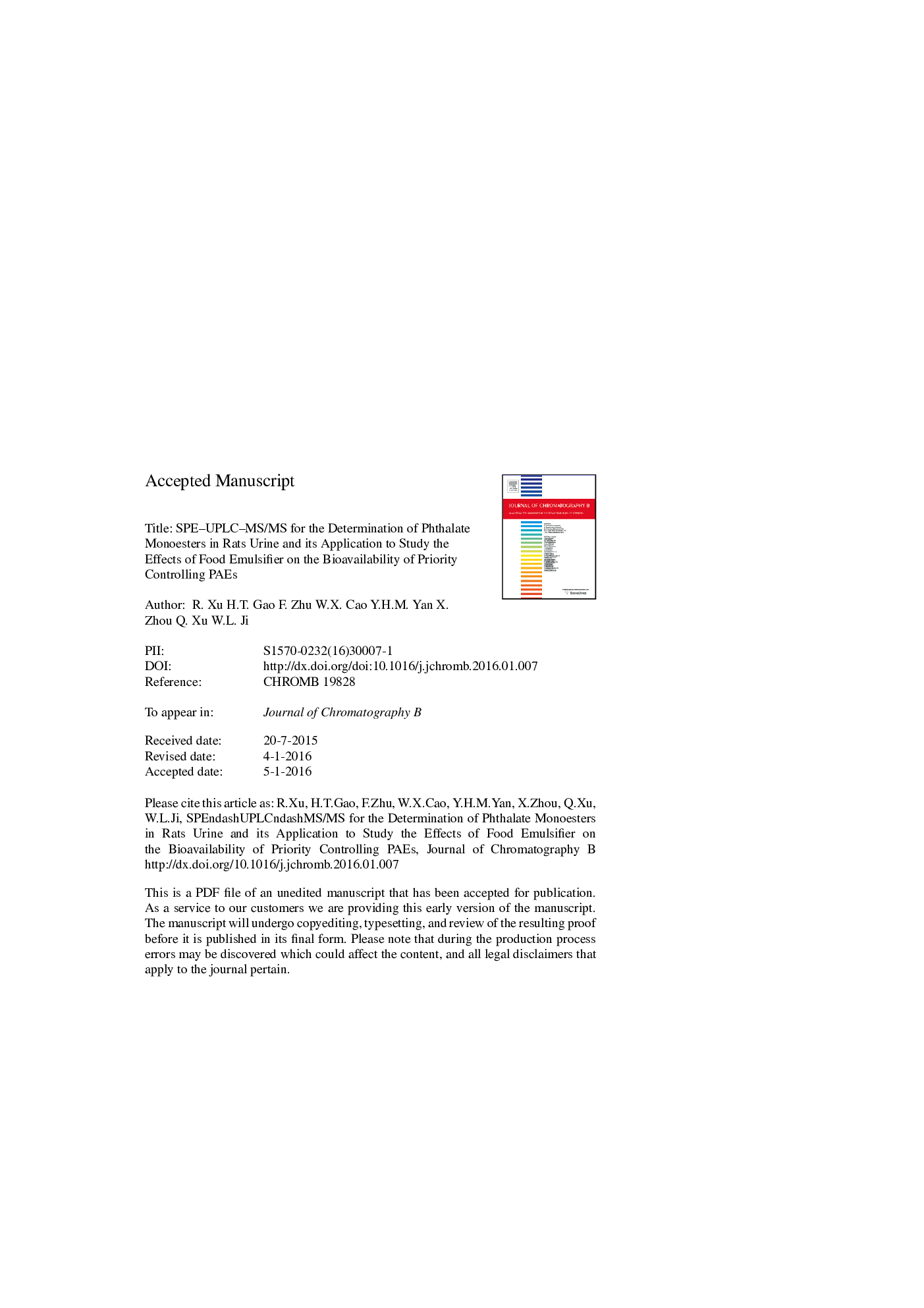| Article ID | Journal | Published Year | Pages | File Type |
|---|---|---|---|---|
| 7616483 | Journal of Chromatography B | 2016 | 27 Pages |
Abstract
This research was mainly focused on the effects of food emulsifier on the bioavailability of six priority controlling phthalate acid esters (PAEs) for the further accurate assessment of their toxic effects, using the corresponding phthalate acid monoesters (PAMEs) in rats urine as biomarkers. Glycerin monostearate was chosen as typical food emulsifier. A method was established to determine PAMEs in urine from rats either in experimental group (integrated gavaged with glycerin monostearate and PAEs) or in control group (gavaged with PAEs only), by using solid-phase extraction (SPE) coupled with ultra performance liquid chromatography tandem mass spectrometry (SPE-UPLC-MS/MS). Extraction recoveries were more than 75% for all the PAMEs; the calibration curve was linear in the range of 1.0-1000.0Â ng/mL with R2Â >Â 0.995; the limits of detection (LOD) were 0.30Â ng/mL-0.50Â ng/mL. In addition, by analysing quality control (QC) urine samples in 3 days, it showed that the method was precise and accurate, for the intra-day and inter-day RSD within 16%, and the accuracy more than 82%. Internal exposure amount of all PAEs in experimental group was significantly higher than that in control group with p values of less than 0.05 except for butyl benzyl phthalates (BBP) (PÂ =Â 0.07). The bioavailability of all PAEs ranged from 5.03% to 109.35% with the presence of food emulsifiers glycerin monostearate, observably higher than that without glycerin monostearate (1.12% to 54.39%). It indicated that food emulsifiers increased the bioavailability of PAEs and may lead to potential food safety risk, which should bring awareness and be further studied.
Related Topics
Physical Sciences and Engineering
Chemistry
Analytical Chemistry
Authors
R. Xu, H.T. Gao, F. Zhu, W.X. Cao, Y.H.M. Yan, X. Zhou, Q. Xu, W.L. Ji,
